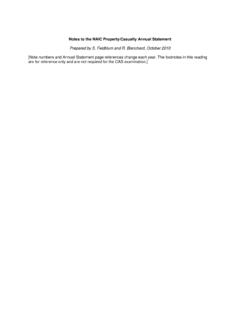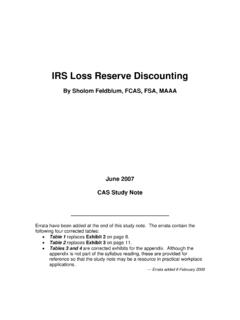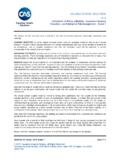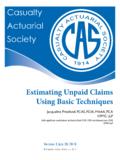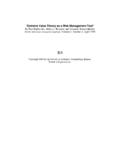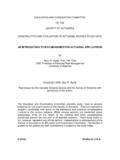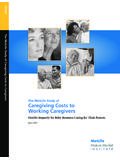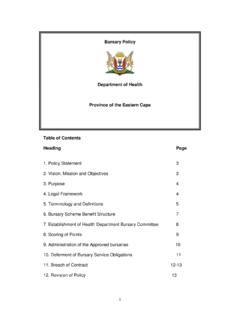Transcription of Basic Ratemaking Version 5 May 2016 2
1 Casualty Actuarial Society, 2016 Basic Ratemaking Fifth Edition, May 2016 Geoff Werner, FCAS, MAAA Claudine Modlin, FCAS, MAAA Willis Towers Watson With significant contributions from: Alice Gannon, FCAS, MAAA; Serhat Guven, FCAS, MAAA; Christine Gennett, ACAS, MAAA; Jeff Kucera, FCAS, MAAA; Brett Nunes, ASA, MAAA; and Dave Otto, FCAS, MAAA i Basic Ratemaking Geoff Werner, FCAS, MAAA and Claudine Modlin, FCAS, MAAA Willis Towers Watson This text outlines Basic property/casualty insurance Ratemaking concepts and techniques. It is intended to be a single educational text to prepare actuarial candidates practicing around the world for Basic Ratemaking .
2 A key concept in the text is the fundamental insurance equation, which balances the expected future income and outgo of an insurance operation. Various chapters discuss the individual components of the equation ( , premium, loss, expense, profit), and other chapters review how to assess whether the equation is in balance in the aggregate and by customer segment. The text focuses on quantitative analysis as well as practical considerations in the Ratemaking process. Finally, the text provides consistent definitions of terms and examples that underlie the Ratemaking techniques discussed.
3 With significant contribution from: Alice Gannon, FCAS, MAAA; Serhat Guven, FCAS, MAAA; Christine Gennett, ACAS, MAAA; Jeff Kucera, FCAS, MAAA; Brett Nunes, ASA, MAAA; Dave Otto, FCAS, MAAA Version 5, MAY 2016 Copyright Casualty Actuarial Society, 2016 ii FOREWORD Ratemaking is a key driver of property and casualty (P&C) insurance profitability and hence a primary actuarial responsibility. Actuaries employ a variety of Ratemaking techniques depending on specific circumstances. For example, techniques used to price short-tailed lines of insurance ( , personal automobile) are different than techniques used in long-tailed lines ( , workers compensation).
4 Even within the same insurance product, actuarial techniques may differ due to regulatory requirements and data limitations. Furthermore, actuarial techniques are constantly evolving due to enhanced information and advances in technology. This text is not intended to document every technique used for P&C insurance Ratemaking . Instead, the purpose of this text is to provide an overview of Basic Ratemaking techniques used in the industry. As such, actuaries should continue to increase the depth and breadth of their knowledge to be able to discern the most appropriate technique for a given situation.
5 ACKNOWLEDGMENTS The completion of this text required significant effort from many individuals other than the primary authors. The authors want to acknowledge the following individuals for researching and summarizing existing Ratemaking material, offering alternative Ratemaking techniques, and reviewing countless drafts: Catherine Taylor, FCAS, MAAA and her CAS committee, comprised of Nancy Braithwaite, FCAS, MAAA; Ginda Fisher, FCAS, MAAA; Chris Styrsky, FCAS, MAAA; Jane Taylor, FCAS, MAAA; Theresa Turnacioglu, FCAS, MAAA; and Ron Zaleski, Jr., FCAS, MAAA, dedicated to partnering with EMB to facilitate the successful completion of this text.
6 The following associates of EMB: Tom Hettinger, ACAS, MAAA; David Sommer, FCAS; Emily Stoll, ACAS, MAAA; Julie Walker, ACAS, MAAA; Sandy Wu, ACAS, MAAA; Harsha Maddipati; and Peter Quackenbush. The following actuaries who were consulted for their expertise in specific Ratemaking topics: Joseph Palmer, FCAS, MAAA; James Guszcza, FCAS, MAAA; and Will Davis, FCAS, MAAA. All of the authors who developed the materials from the prior Ratemaking examination; EMB relied heavily upon that material when creating this text. Howard Mahler, FCAS, MAAA for his valuable contributions to subsequent versions of the text.
7 REFERENCE MATERIAL The objective of the CAS in creating a new Basic Ratemaking text was to replace the series of readings that existed on the syllabus of Basic education as of 2007 with a single educational publication. As such, the authors relied heavily on a series of published articles and texts that are contained in the Bibliography at the end of the text. Specific references to each of these sources are also present in individual chapters. iii ROUNDING Rounding procedures have been applied in a manner consistent with the number of decimals shown in the text and tables (or per rounding procedures specifically outlined in the text).
8 Small discrepancies may exist between the text and table entries when the text is summarizing multiple calculations within a table or further dissecting calculations in a table for illustrative purposes. ORGANIZATION OF THIS TEXT This text is organized into sixteen chapters plus six appendices. The chapters discuss various Ratemaking concepts and techniques, and provide simple examples. Each chapter concludes with a narrative summary as well as an outline of key concepts covered in the chapter. The appendices provide in-depth practical examples of some of the techniques discussed throughout the text.
9 In order to reinforce the concepts and techniques discussed in the body of the text, the authors suggest Appendices A-D be read upon completion of Chapter 8, and Appendices E-F be read upon completion of Chapters 9-10. Below is a summary of the content of each chapter and appendix. Chapter 1 provides an overview of P&C insurance Ratemaking , highlighting the unique relationship between price, cost, and profit. This overview includes Basic P&C insurance terms and commonly used insurance ratios. This chapter also introduces the fundamental insurance equation, a key concept that is referenced frequently in other chapters.
10 This concept states that premium charged for policies written during a future time period should be appropriate to cover the losses and expenses expected for those policies while achieving the targeted profit. Chapter 2 discusses the P&C insurer rating manual, an aid for anyone who needs to understand the process of calculating an insurance premium. The four main components of P&C insurer rating manuals are rules, rate pages, rating algorithms, and underwriting guidelines. The chapter also includes three rating manual examples for different insurance lines of business.
